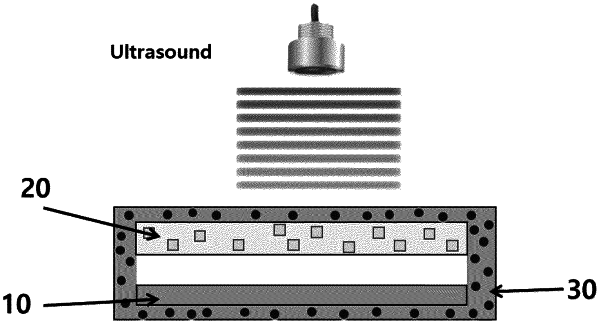| CPC A61N 7/00 (2013.01) [C08L 101/16 (2013.01); A61N 2007/0026 (2013.01); B82Y 5/00 (2013.01); B82Y 30/00 (2013.01); C08L 2201/06 (2013.01); C08L 2203/02 (2013.01)] | 9 Claims |

|
1. A triboelectric generator including a nano-composite time-limited via selective ultrasound application thereto, the generator comprising:
an electrode made of a biodegradable material;
a membrane disposed to face toward the electrode and spaced apart from the electrode; and
an encapsulation portion surrounding the electrode and the membrane,
wherein each of the membrane and the encapsulation portion is made of a nano-composite time-limited via selective ultrasound application thereto,
wherein the nano-composite includes:
a life-limited matrix; and
a nano-carrier embedded or contained in the matrix, wherein the nano-carrier is decomposed when a focused ultrasound is applied thereto,
wherein when general ultrasound is applied to the nano-composite, the membrane vibrates such that triboelectricity is generated via friction between the membrane and the electrode,
wherein when the focused ultrasound is applied to the nano-composite, the nano-carrier is decomposed and, thus, the matrix becomes porous, thereby increasing a biodegradation rate of the matrix.
|